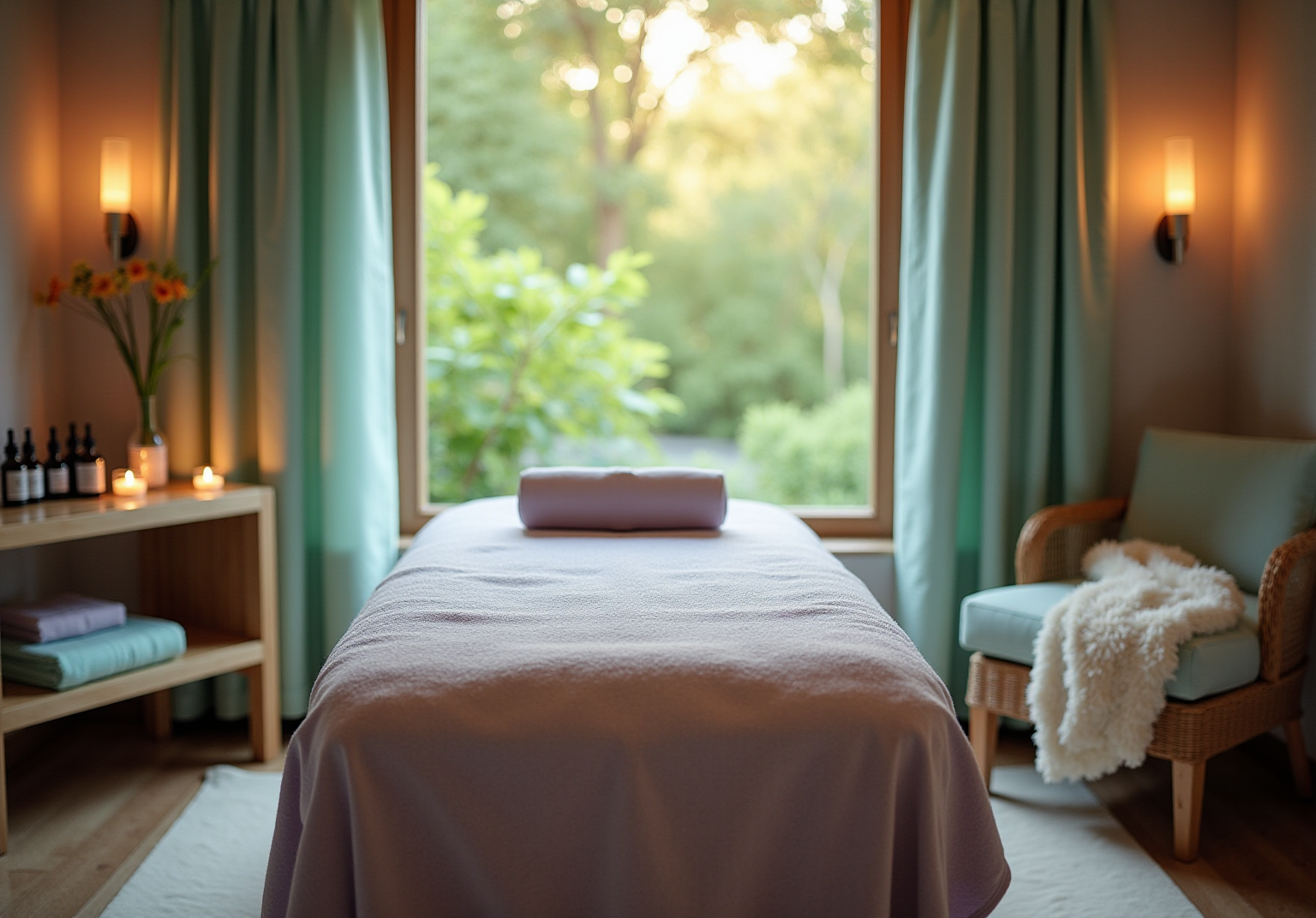What is Head Massage? Benefits and Techniques Explained
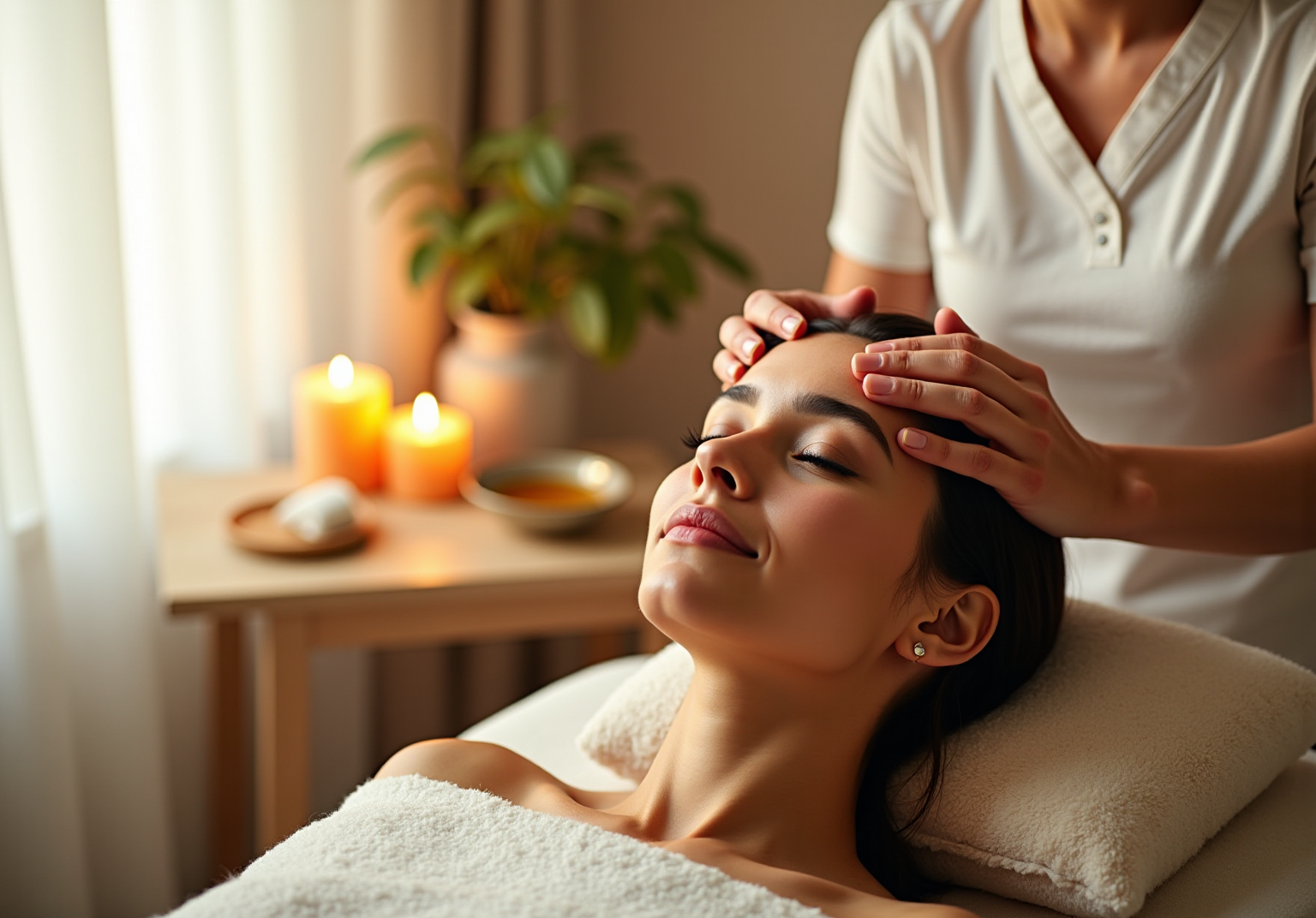
Overview
Head massage serves as a therapeutic practice that employs a variety of techniques, including kneading, circular motions, and acupressure, aimed at promoting relaxation and alleviating tension in the head, neck, and shoulders. This practice not only enhances emotional well-being and reduces stress but also improves circulation and hair health. Research supports these claims, indicating significant benefits such as lowered anxiety levels and improved sleep quality.
The evidence is compelling: head massage can lead to a notable enhancement in overall health and well-being. By integrating this practice into your routine, you can experience profound relaxation and stress relief. As corporate executives navigate their demanding schedules, incorporating such therapeutic techniques can serve as a powerful tool for maintaining mental clarity and emotional stability.
In conclusion, consider making head massage a regular part of your wellness strategy. The potential for improved health outcomes is significant, and the benefits extend beyond mere relaxation. Engage with this practice and witness the transformative effects it can have on your life.
Introduction
Head massage is a practice rich in tradition and cultural significance, incorporating a variety of techniques aimed at promoting relaxation and well-being. This ancient therapy offers numerous benefits, including stress relief, improved circulation, and enhanced focus, allowing individuals to unlock a pathway to greater mental clarity and emotional stability.
However, with an array of methods and cultural variations available, the challenge lies in determining the most effective approach to integrate head massage into one’s wellness routine. By understanding these elements, one can make informed choices that enhance their overall health and productivity.
Define Head Massage: An Overview of Techniques and Practices
Cranial kneading, commonly referred to as cranial therapy, serves as a healing technique that concentrates on the cranium, neck, and shoulders. This method employs various techniques, including kneading, circular motions, and acupressure, to promote relaxation and alleviate tension. It can be executed using fingers, palms, or specialized tools, making it a versatile addition to wellness routines aimed at enhancing overall health.
Rooted in diverse cultural traditions, particularly Indian head massage therapy (champissage), this practice emphasizes the stimulation of acupressure points to improve circulation and reduce stress. Research indicates that regular head massage can significantly lower cortisol levels, fostering a sense of tranquility and well-being. A systematic review revealed that participants reported immediate feelings of relaxation and a decrease in anxiety following treatment.
Incorporating head massage into daily practices can yield substantial benefits, such as improved sleep quality and enhanced emotional stability. Notably, Ayurvedic scalp therapy can prevent stress-related issues like premature greying, dandruff, and hair loss by nourishing the scalp and fortifying hair follicles. Experts assert that this practice not only stimulates blood flow, essential for healthy hair growth, but also contributes to overall wellness. As Evie Scott aptly states, "Participants reported immediate feelings of calmness, a reduction in anxiety, and an overall sense of psychological well-being post-treatment."
To maximize the benefits of scalp therapy, it is vital to characterized by gentle lighting and soothing music. By understanding the various techniques and their applications, individuals can fully appreciate the comprehensive advantages of cranial therapy, making it a crucial component of their wellness journey.
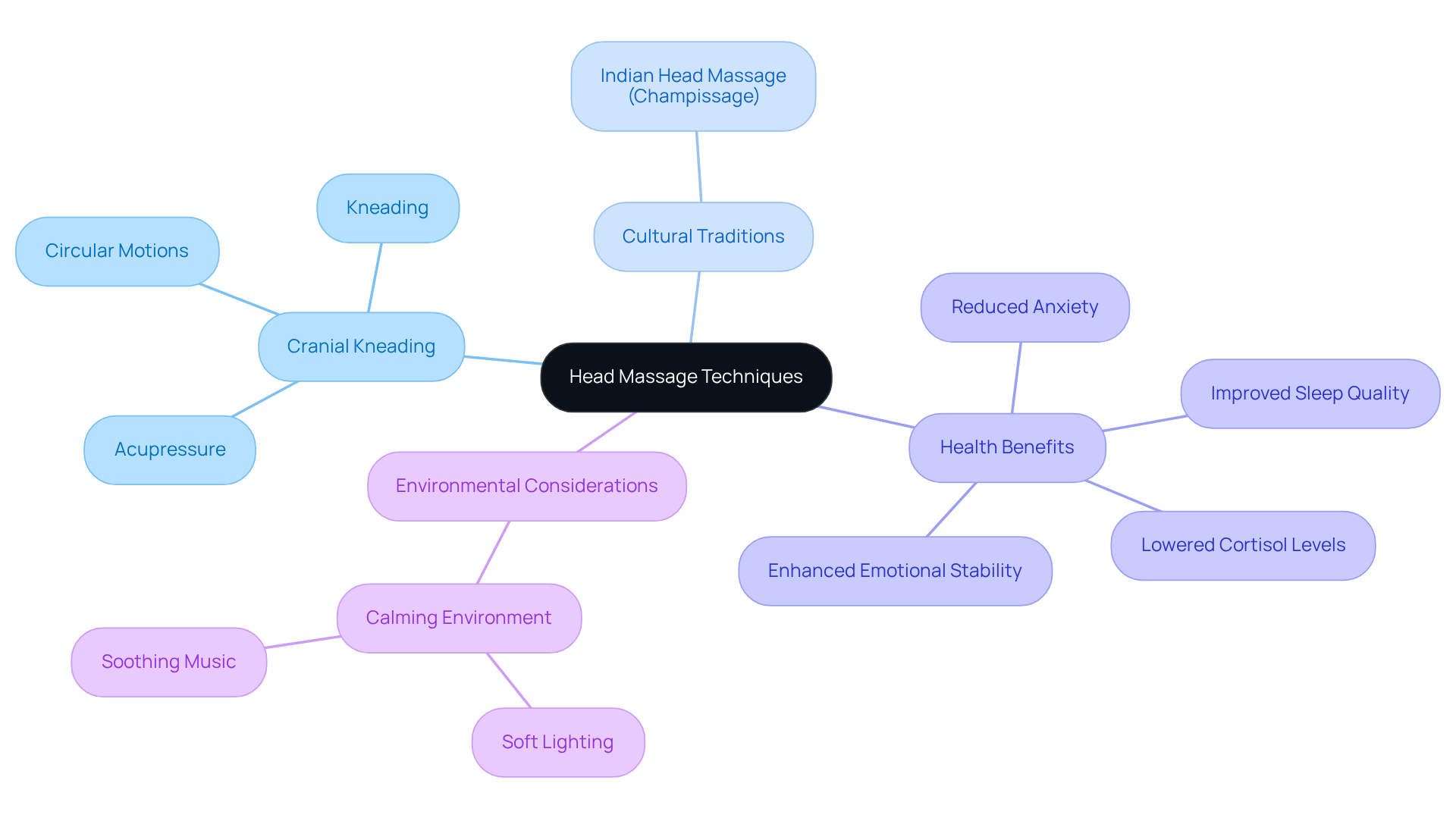
Explore the Benefits of Head Massage: From Stress Relief to Enhanced Focus
Head massage offers a multitude of benefits, including stress relief, improved circulation, and enhanced cognitive function. Research indicates that regular cranial treatments can effectively lower blood pressure, reduce anxiety, and alleviate headaches. The process of a head massage promotes blood flow, nourishing hair follicles and potentially encouraging hair growth. Additionally, cranial therapy can sharpen focus and concentration by increasing oxygen delivery to the brain. Many individuals report heightened relaxation and mental clarity following a head massage session, making it an invaluable practice for those in high-pressure environments or anyone aiming to enhance their overall wellness.
To achieve maximum benefits, it is recommended that head massage sessions for scalp therapy last between 15 to 20 minutes. Notably, studies reveal that 83% of massage-focused research demonstrated significant reductions in anxiety levels, with systematic reviews analyzing high-quality studies that confirm the efficacy of manual therapy for anxiety relief.
To optimize the experience, cleansing the head and hair prior to massage is crucial for . Techniques such as applying warm oil and concentrating on the temples and neck can further enhance relaxation and the effectiveness of a head massage.
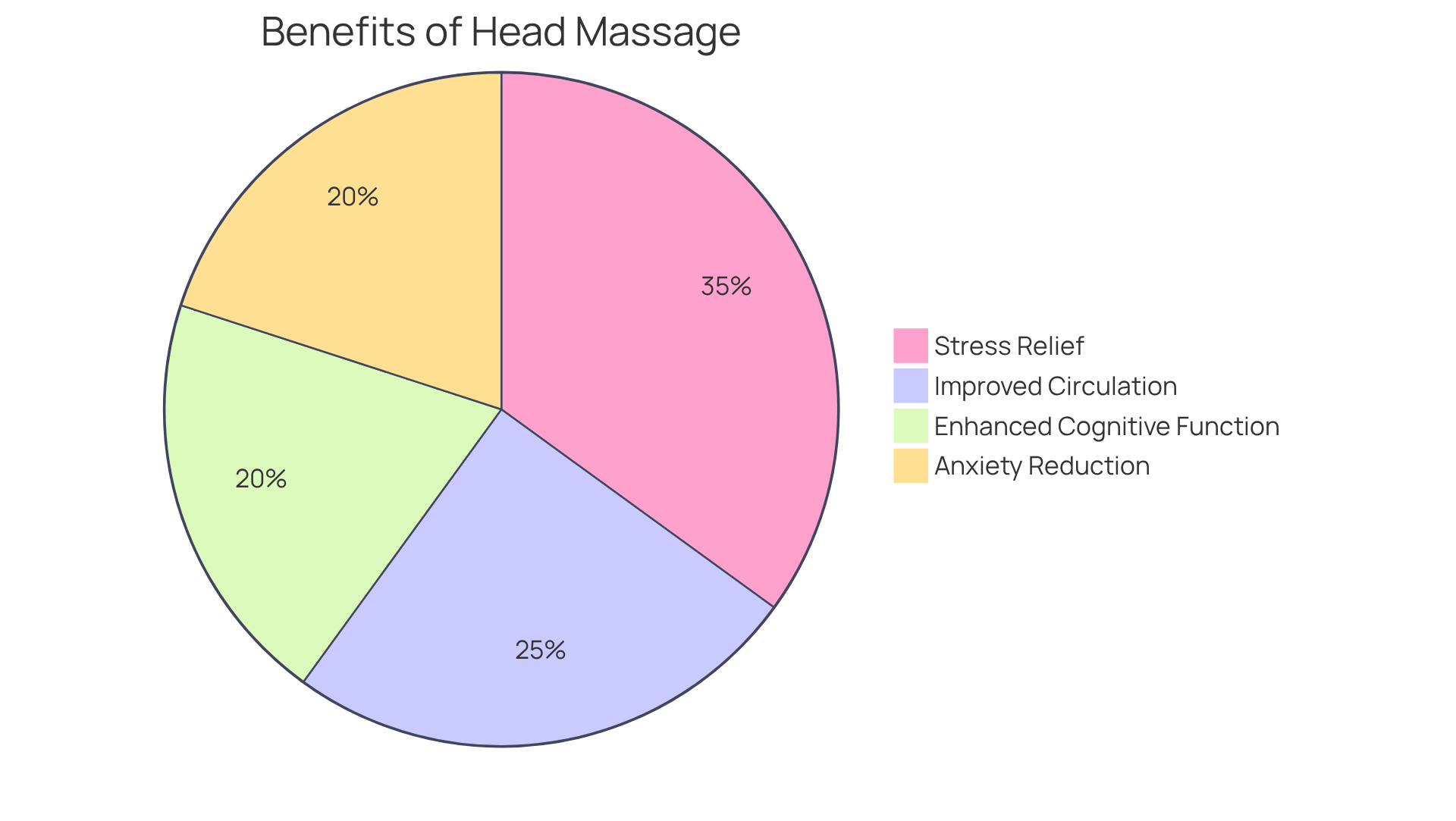
Understand Techniques of Head Massage: Methods for Effective Application
Effective scalp manipulation techniques encompass a variety of methods, including circular motions, kneading, and tapping. To initiate a simple cranial rub, apply gentle pressure with your fingertips, moving in small circles over the top of the head. Gradually increase the pressure as needed, focusing on areas that feel particularly tense. Techniques such as effleurage, which involves long, sweeping strokes, and petrissage, characterized by kneading, can significantly enhance relaxation.
For those interested in head massage, targeting specific acupressure points can relieve tension in the neck and shoulders. Furthermore, tools like scalp massagers facilitate the process, providing deeper, more even pressure that stimulates circulation and promotes relaxation. Regular practice of these techniques not only alleviates stress but also contributes to improved overall well-being.
Head massage therapy offers advantages such as decreased stress and anxiety, enhanced sleep quality, and relief from headaches. like coconut, castor, or argan oil prior to massaging enhances the experience by ensuring even distribution and deeper absorption. Incorporating self-head therapy as a regular practice leads to considerable long-term benefits, as it stimulates the parasympathetic nervous system, encouraging relaxation and lowering cortisol levels.
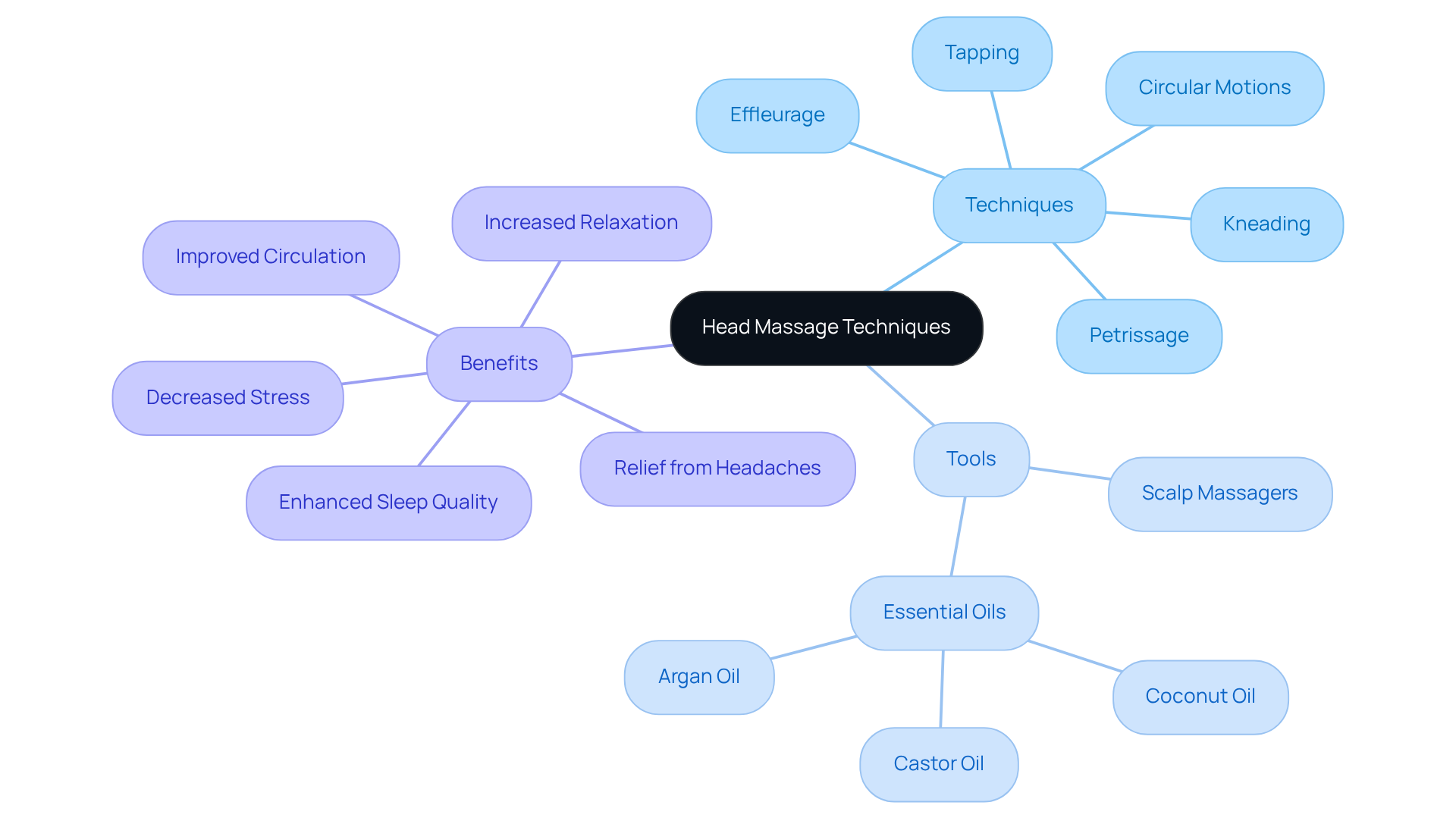
Cultural Significance and Historical Context of Head Massage
Head therapy boasts a rich history, with roots extending back thousands of years across diverse cultures such as India, China, and Japan. In India, the tradition of Indian massage, known as champissage, is deeply embedded in Ayurvedic medicine, promoting relaxation and overall health. This method frequently incorporates warm oils, such as sesame or bhringraj oil, which amplify its and nourish the hair. Japanese scalp spa therapies employ specialized techniques that prioritize scalp health and relaxation, reflecting a holistic approach to wellness. Both methods underscore the significance of touch and its healing advantages, illustrating how head massage has evolved into a vital element of global health customs.
Research supports these practices, revealing that regular scalp treatment, including a head massage, can enhance blood circulation, alleviate stress, and improve mental clarity, making it a valuable addition to contemporary self-care routines. Specific techniques, such as gentle kneading and rhythmic tapping, are known to stimulate the nervous system, fostering relaxation and reducing anxiety. Furthermore, studies suggest that scalp stimulation can enhance blood circulation to hair follicles, promoting hair growth and scalp health.
At Tsavo Wellness, our clients have shared transformative experiences, emphasizing how head massage has enabled them to reconnect with their calmer selves and manage stress effectively. The incorporation of these historical methods into modern wellness approaches not only respects their origins but also adapts them for today's health-conscious individuals. As Carlos Alvy, a skilled professional in scalp massage therapy, aptly states, 'The practice of scalp massage dates back thousands of years,' underscoring its enduring relevance.
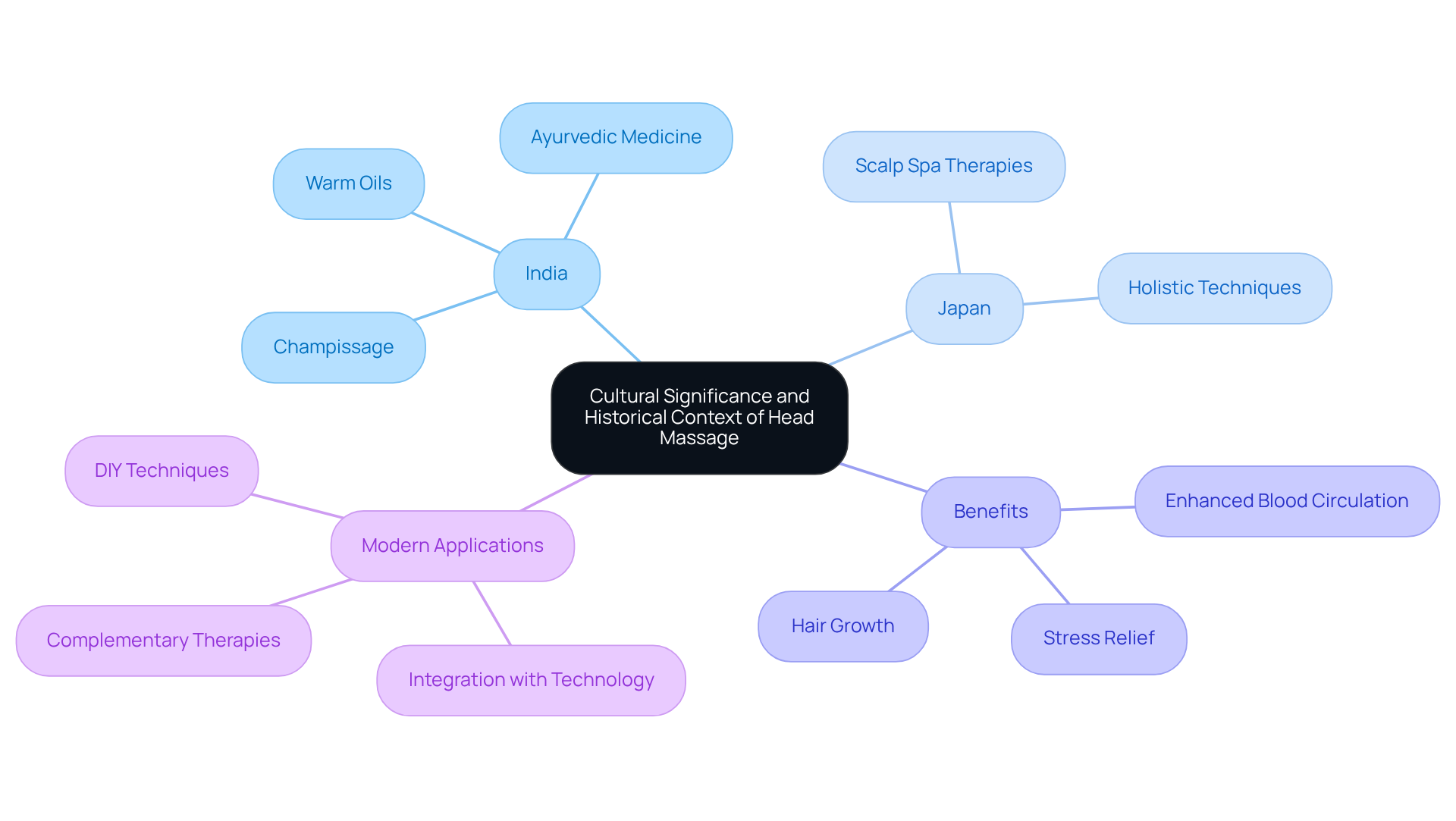
Conclusion
Head massage, a time-honored practice deeply rooted in various cultural traditions, presents an array of benefits that extend well beyond mere relaxation. By concentrating on the cranium, neck, and shoulders, this therapeutic technique utilizes diverse methods, including kneading and acupressure, to alleviate tension and promote emotional well-being. The importance of integrating head massage into wellness routines is profound, as it serves as a powerful tool for enhancing overall health.
Throughout this discussion, we have explored key insights regarding the myriad advantages of head massage, such as its capacity to:
- Reduce stress
- Improve circulation
- Boost cognitive function
This practice not only fosters immediate feelings of calmness and relaxation but also contributes to long-term benefits, including improved sleep quality and emotional stability. Furthermore, the examination of various techniques and cultural significance underscores how this ancient practice has evolved and adapted to meet modern wellness needs.
Ultimately, embracing head massage as a regular component of self-care routines can lead to significant improvements in both mental and physical health. By understanding its techniques and benefits, individuals can harness the power of this therapeutic practice to cultivate a sense of tranquility and enhance their overall quality of life. Engaging in head massage not only honors its rich historical context but also paves the way for a healthier, more balanced existence.
Frequently Asked Questions
What is head massage and what techniques does it involve?
Head massage, also known as cranial therapy, is a healing technique that focuses on the cranium, neck, and shoulders. It employs various techniques such as kneading, circular motions, and acupressure to promote relaxation and alleviate tension. This can be performed using fingers, palms, or specialized tools.
What are the cultural origins of head massage?
Head massage is rooted in diverse cultural traditions, particularly Indian head massage therapy known as champissage, which emphasizes the stimulation of acupressure points to improve circulation and reduce stress.
What are the benefits of regular head massage?
Regular head massage can significantly lower cortisol levels, leading to feelings of tranquility and well-being. It can also improve sleep quality, enhance emotional stability, and help prevent stress-related issues such as premature greying, dandruff, and hair loss.
How does head massage affect anxiety and relaxation?
Research indicates that participants in head massage treatments reported immediate feelings of relaxation and a decrease in anxiety, contributing to an overall sense of psychological well-being.
What is Ayurvedic scalp therapy and its benefits?
Ayurvedic scalp therapy is a form of head massage that nourishes the scalp and fortifies hair follicles. It stimulates blood flow, essential for healthy hair growth, and can prevent stress-related hair issues.
How can one maximize the benefits of scalp therapy?
To maximize the benefits of scalp therapy, it is important to create a serene environment with gentle lighting and soothing music, enhancing the relaxation experience.
Why is understanding the techniques of head massage important?
Understanding the various techniques and their applications allows individuals to fully appreciate the comprehensive advantages of cranial therapy, making it an essential part of their wellness journey.


